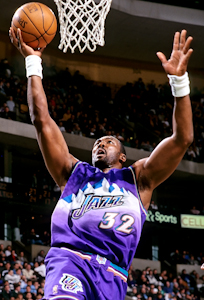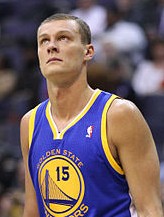 Generations of fans know the Utah Jazz as a model of stability. They were raised on Hall of Famers John Stockton and Karl Malone, coach Jerry Sloan and super significant owner Larry H. Miller, the rock of the franchise. Miller kept the team together, mended issues with coaches and players and even took financial risks to purchase the team.
Generations of fans know the Utah Jazz as a model of stability. They were raised on Hall of Famers John Stockton and Karl Malone, coach Jerry Sloan and super significant owner Larry H. Miller, the rock of the franchise. Miller kept the team together, mended issues with coaches and players and even took financial risks to purchase the team.
When Miller died in 2009, the franchise slowly lost all the stability he imparted to it as the sole owner.
It truly fell apart in 2011, when All-NBA point guard Deron Williams and Sloan could no longer co-exist. Sloan resigned as coach, and Williams was traded for “the future.”
Under power-behind-the-throne GM Kevin O’Connor, the Jazz reached for marginal veterans in hope of maintaining the illusion of being a playoff team. Instead, mercenaries came to Salt Lake City, were rewarded with playing time they would not have received elsewhere, then left for greener pastures or larger paydays. There was a playoff berth in 2012, but that model was unsustainable.
Enter new GM Dennis Lindsey, who has jazzed things up by doing things opposite to O’Connor. This season, the team looks to put the focus on development and learning from experience – as opposed to desperately clinging to the hope that also-rans will help you make the playoffs. Lindsey is looking at that very “future” the Jazz traded for, because it is now the “present.”
1. A New Point Guard. Last season the Jazz used Mo Williams, Jamaal Tinsley, Earl Watson, Alec Burks and Randy Foye at the point, with D-Leaguer Jerel McNeal on the team as well. Only Burks is back, and he is a combo guard. The Jazz have signed journeyman John Lucas III and undrafted rookie Ian Clark, all but giving the spot to Michigan star Trey Burke, who will get every chance possible to lead this team.
Burke is the most immediately marketable player on the roster, and the Jazz need him to shine in order to captivate the hearts and minds of a small market fan base that stopped showing up to home games last season.
Some worry about Burke’s size and his ability to transition to the NBA. More people seem to point out his inability to dominate the Summer League as a warning sign. I’m not worried in the least. He has been solid on every level, and there will be no pressure as the team is not in “win now” mode.
And also Burke doesn’t have to worry about coach Tyrone Corbin, who has a history of shunning youth to prove a point. Corbin was brought into the principal’s office this offseason and given a talking-to by Jazz brass – all but dictating his future rotations shift toward youth.
Burke is going to get a chance to be a star. And in an NBA which increasingly revolves around the highly marketable celestial beings, the small-market Utah franchise needs Burke to ascend to stardom.
2. Bench Play. Last season, the Jazz had one of the most productive benches in the league. The reserves were  talented and played hard whenever their numbers were called. But the Jazz allowed Al Jefferson and Paul Millsap to walk via free agency to elevate Enes Kanter and Derrick Favors, and Lindsey did not reload the bench at all.
talented and played hard whenever their numbers were called. But the Jazz allowed Al Jefferson and Paul Millsap to walk via free agency to elevate Enes Kanter and Derrick Favors, and Lindsey did not reload the bench at all.
A weaker bench will sometimes let games slip away or turn manageable deficits into blowouts. Favors and Kanter will be replaced by Andris Biedrins (who scored 24 total points last season) and either rookie string bean Rudy Gobert, veteran string bean in Jeremy Evans or, um, Marvin Williams? That is a huge dropoff.
Similarly, the team is going from having experienced players available to play point guard to relying on Lucas, Burks or Clark. At the wing, Hayward and Burks appear to be elevated to starters, leaving the bench spots to Williams, Brandon Rush (coming off an ACL tearand the ancient Richard Jefferson.